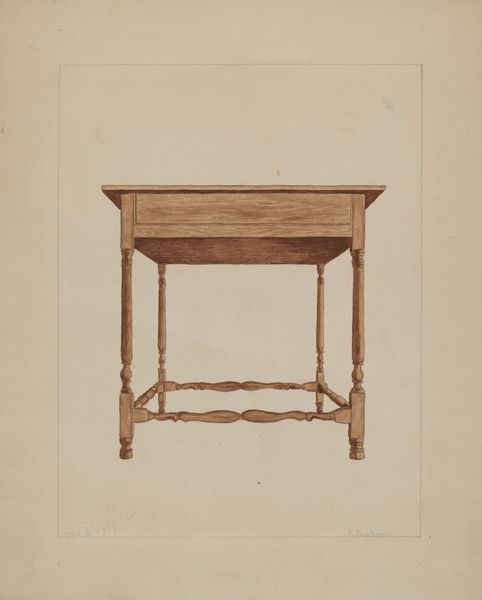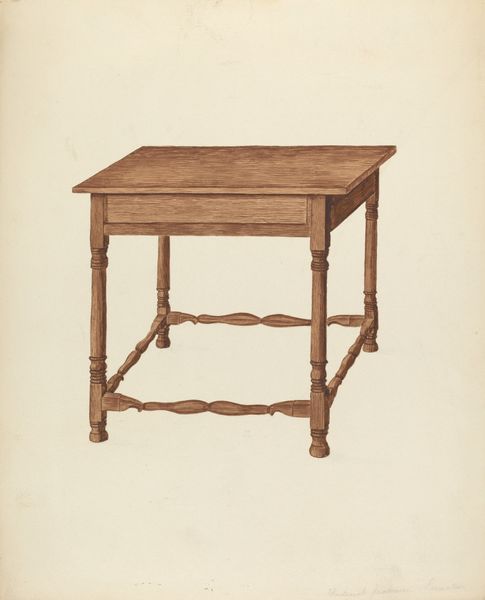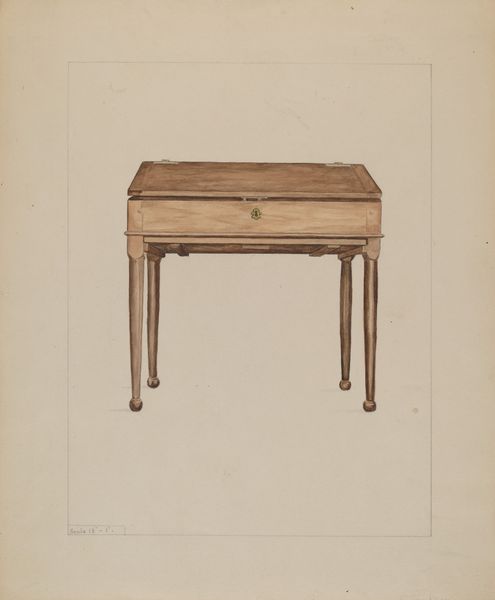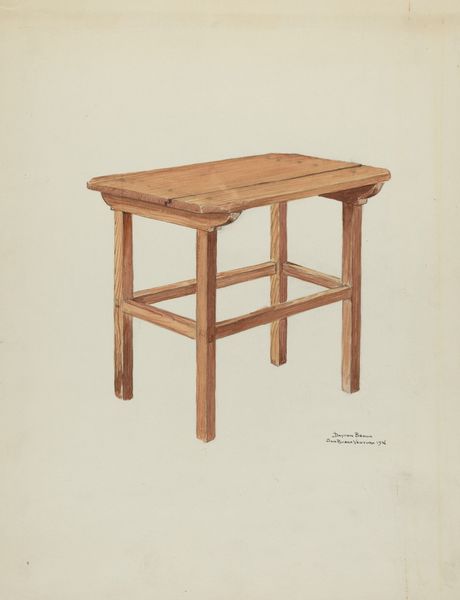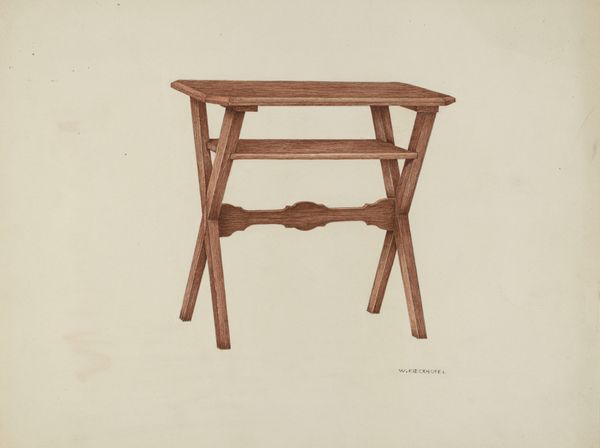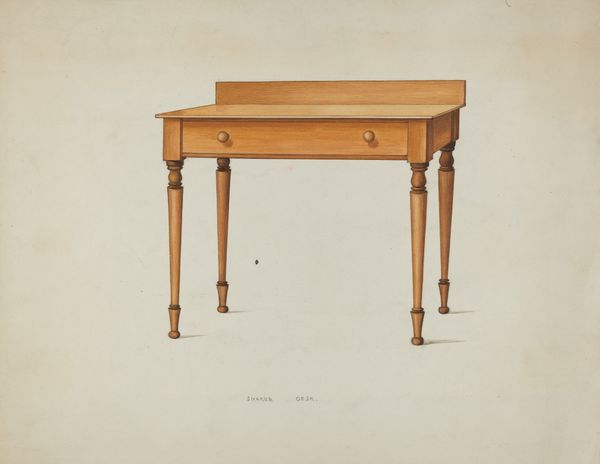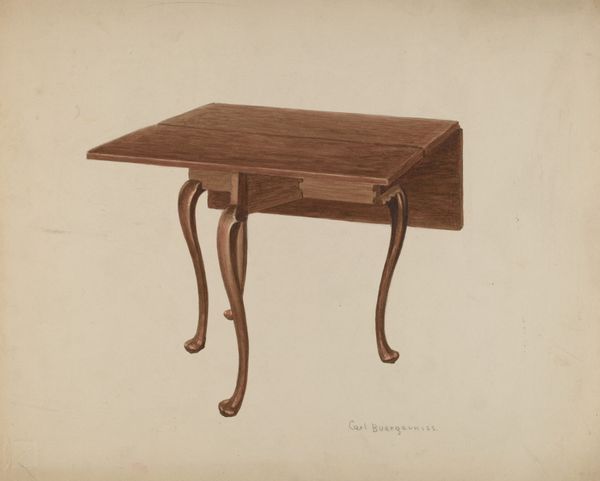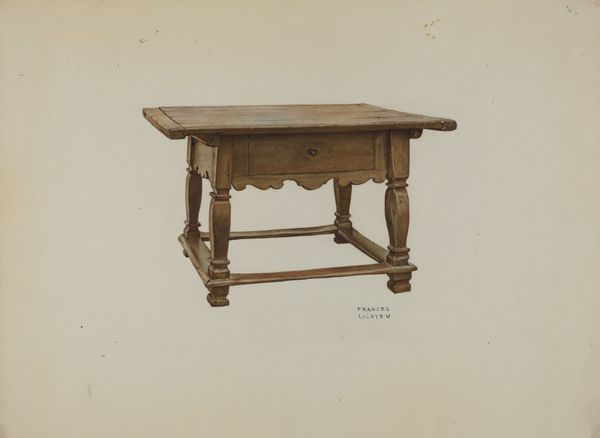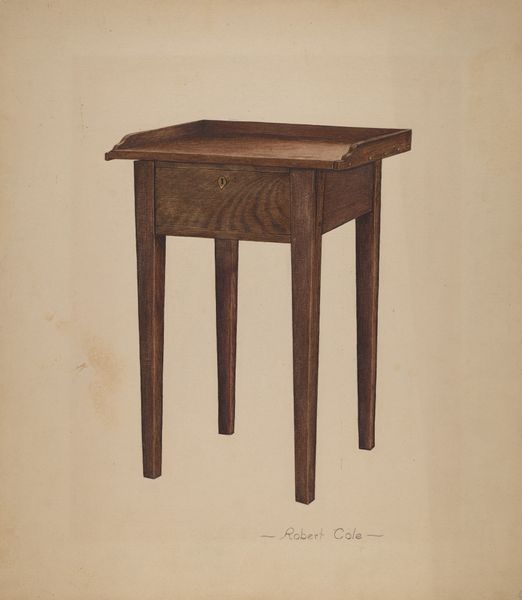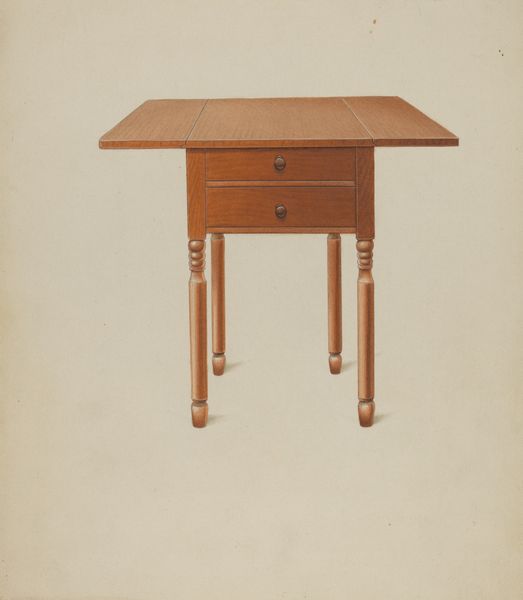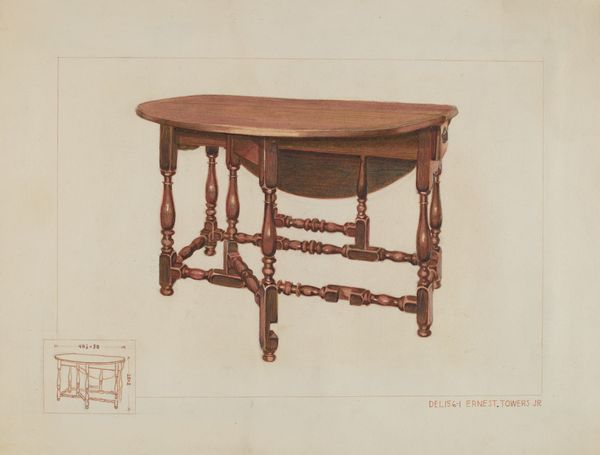
drawing, paper, pencil
#
drawing
#
water colours
#
paper
#
pencil
#
academic-art
#
realism
Dimensions: overall: 28 x 22.7 cm (11 x 8 15/16 in.) Original IAD Object: 26 1/2"high; 26 3/4"wide; 18 1/2"deep
Copyright: National Gallery of Art: CC0 1.0
Editor: Here we have Frederick Jackson’s "Table," created around 1937 using pencil, watercolor, and paper. It strikes me as incredibly precise and detailed, almost like a technical drawing. What stands out to you in terms of its formal qualities? Curator: The artist’s meticulous rendering of form is immediately apparent. Notice the linear precision; Jackson delineates the table’s structure with remarkable clarity. The subtle gradations in tone achieved through watercolor washes model the object, giving it a sense of volume and weight. Editor: The light seems very consistent, doesn’t it? Is there any suggestion of dramatic shadows or highlights? Curator: Precisely. There's a notable evenness of illumination. This treatment, while lacking overt drama, serves to foreground the object's construction and material qualities. The emphasis seems to be on describing the object itself rather than using light and shadow to create a mood. Observe the textures of the wood carefully evoked by delicate hatching. Editor: It's almost clinical in its representation. Do you see any areas where the artist departed from strict realism? Curator: While the overall approach is realistic, the choice to render the object in monochromatic tones and within a stark, empty background removes the table from any specific context. This isolation allows the viewer to focus solely on its formal arrangement – its lines, shapes, and the interplay between solid and void. This formal austerity is crucial to its aesthetic effect. Editor: I see what you mean. It's less about a table in a room and more about the platonic idea of a table. Curator: Precisely. By isolating and carefully depicting its essential elements, Jackson compels us to appreciate its structure and design. Editor: Thank you for sharing these details with me. I hadn't considered how much the absence of context contributes to its formal power. Curator: And I'm enlightened by your astute recognition of its inherent stillness.
Comments
No comments
Be the first to comment and join the conversation on the ultimate creative platform.
